Very Little Of What U.S. Consumers Spend Goes Toward Stuff Made In China
What you think you know about the U.S.-China trade relationship may not be entirely true.
Matthew Yglesias points us this morning to an interesting study about the portion of American consumer spending that goes toward goods made in China or other countries, which includes this chart [Table 1 in the text is in the study, Figure 2 is the pie chart below]:
Table 1 shows that, of the 11.5% of U.S. consumer spending that goes for goods and services produced abroad, 7.3% reflects the cost of imports. The remaining 4.2% goes for U.S. transportation, wholesale, and retail activities. Thus, 36% of the price U.S. consumers pay for imported goods actually goes to U.S. companies and workers.
This U.S. fraction is much higher for imports from China. Whereas goods labeled “Made in China” make up 2.7% of U.S. consumer spending, only 1.2% actually reflects the cost of the imported goods. Thus, on average, of every dollar spent on an item labeled “Made in China,” 55 cents go for services produced in the United States. In other words, the U.S. content of “Made in China” is about 55%. The fact that the U.S. content of Chinese goods is much higher than for imports as a whole is mainly due to higher retail and wholesale margins on consumer electronics and clothing than on most other goods and services.
(…)
Figure 2 shows the share of U.S. PCE based on where goods were produced, taking into account intermediate goods production, and the domestic and foreign content of imports. Of the 2.7% of U.S. consumer purchases going to goods labeled “Made in China,” only 1.2% actually represents China-produced content. If we take into account imported intermediate goods, about 13.9% of U.S. consumer spending is attributable to imports, including 1.9% imported from China..
The study authors produced this information to support their conclusion that Chinese price and labor inflation is unlikely to have an impact on U.S. price levels because Chinese goods constitute such a small percentage of American consumer spending. However, it’s also relevant for other purposes.
First of all, it seems counter-intuitive given the constant rhetoric we’ve seen from various sources ranging from Lou Dobbs to Donald Trump asserting that we’re about to be over-run by the Chinese. As Yglesias notes, part of the reason for the disparity in the chart is that the vast majority (67 percent) of American consumer spending is for services rather than goods, and services. However, there are also a vast variety of action consumer goods where “Made in the USA” still beats China:
Even durable goods, which only account for about 10 percent of total spending, are mostly made in America — 66.6 percent to 12 percent for China with the rest coming from the rest of the world. In fact the only category of spending in which Made in the USA doesn’t account for the majority is clothing and shoes
That last part isn’t very surprising because the labor required to make clothes and shoes is relatively unskilled and thus likely to be far cheaper in foreign countries than the United States. When it comes to stuff that requires skill to be made, though, the labor costs are going to be higher, even without unions, and its typically going to be cheaper to make that stuff in the United States than make it overseas and then pay the shipping costs to bring it to the US. This is why, for example, most of the major foreign car manufacturers have set up manufacturing facilities in the United States.
Now, this study does not take into account non-consumer spending where it’s certainly possible that foreign goods are more prevalent. Nonetheless, the take away from information like this is that fears of a foreign takeover of American markets are, to a significant degree, highly exaggerated.
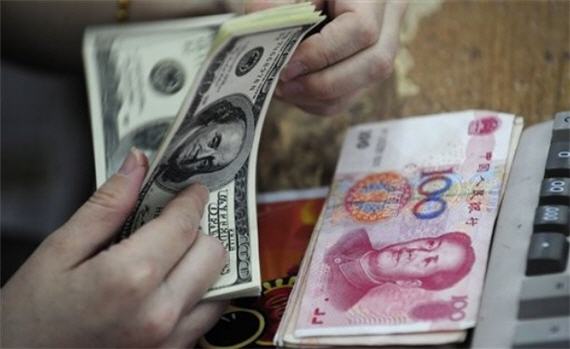
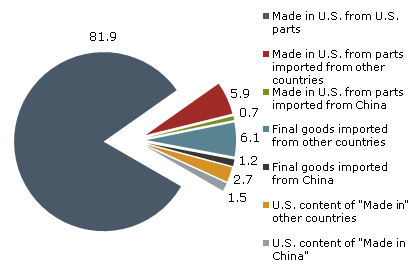

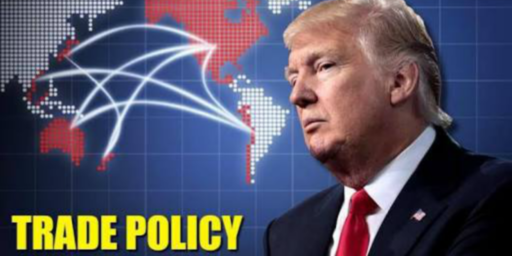

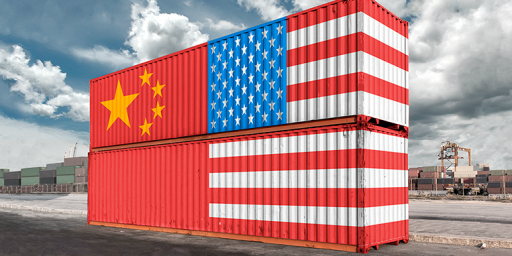
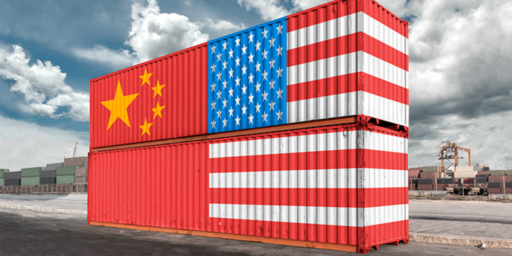

The economic fallout is primarily related to the loss of higher paying manufacturing jobs rather than any perceived foreign threat of taking over the markets. Ultimately this kind of xenophobia expresses itself due to widespread job insecurity. If we had a labor policy instead of a GDP growth policy at lot of that anxiety could be alleviated. Hence Roosevelt’s insistence that the rights of the American people extended beyond the Bill of Rights to include freedom from want and freedom from fear.
What we currently have is a system which preys upon and profits from those fears: you’d better take those pay-cuts and loss of medical coverage, or we just might have to ship your job overseas. The system also transfers blame to the weakest, hence we get fascistic abominations like Arizona making it illegal to be two shades darker than Woody Allen.
I think Trump’s main point, which I believe is true, is that China can build things and create new assembly lines in weeks, if not days, whereas in the U.S., it will take several years to either put the shovel in the ground or begin tweaking an assembly line. I believe we can do better than that without necessarily replicating China’s health, safety and environmental problems.
But yeah, for the most part China produces cheap goods; they want to change that.
I am very skeptical of the study’s findings. I’d need to see a lot more detail than they’re providing. The problem may be that the people doing the study may not be aware of where things are actually made and even those producing them may not have a clear idea. Let me give some examples.
The U. S. has essentially stopped producing food additives. China produces nearly all of them. If the food you’re buying is vitamin-enriched, texture or color enhanced, or otherwise “improved”, the odds are overwhelming that it contains things made in China. We also buy a lot of fresh produce and seafood from overseas. Those issues alone should call the study into question. Yes, those things may constitute a small proportion of the total cost of the item but in aggregate they compose an enormous amount of spending.
Do we make small engines over here? The last time I checked we didn’t–they were all made in Japan or South Korea. That makes me wonder about the automotive findings, too. I stopped at those.
I’m concerned that the study is an exercise in sophistry–“directed science”.
I’m with Dave Schuler on this one.
Another: “In fact the only category of spending in which Made in the USA doesn’t account for the majority is clothing and shoes.” That can’t possibly be true. Certainly, personal electronics of various sorts aren’t mostly Made in the USA.
“This is why, for example, most of the major foreign car manufacturers have set up manufacturing facilities in the United States.”
That´s because of tariffs, not because of labour costs.
As someone who makes a serious attempt to buy American I find this hard to believe. You can’t buy cloths, electronics, toys, small kitchen appliances, etc that are made in the US. I was recently successful in finding a vacuum cleaner and a hot water heater made in the US but not a coffee maker. Including services is misleading – it’s difficult to outsource many services.
As am I. I don’t have a better study to fall back on….but it’s just plain hard as hell to NOT purchase “stuff” made in China.
Many auto parts (repair parts) are made there and many US Corporations do get their castings from China (John Deere for example).
If I were to go shopping for various products (aside from earth moving equipment or airplanes), I don’t think i’d come home with 81.9% of them being made in the USA.
I think the point is that your weekly purchase of things made in China at Target (toys, clothes, iPhones, small electrics, etc.) makes up a much smaller percentage of our collective spend than we think. According to the study, only about 13% of our total spend goes into those categories (clothes/shoes and other non-durables in the non-durables section).
But I agree that a) this is hiding the ball – what alarms people is the percent of consumption on non-durables that’s made in China, and mixing it in with medical care and rent to make it seem like less of a problem doesn’t assuage our concerns – and b) the made in China percents do seem awfully small within categories.
It costs 2000 dollars per shipping container. So, the expense of everyday items is not that costly to ship. You can put a lot of clothes and electronics in those containers.
I am apparently one of the few people who does find the statistics credible, but only because I think the figures are in terms of dollars spent, and everyone else seems to be thinking in terms of number of transactions.
Sure, when you go to Walmart, it’s hard to find consumer electronics that are made in the US. But most people don’t spend much of their income on consumer electronics. If you think of the places most of our money gets spent: food, housing, cars, etc. you see that most of our dollars end up going to things made in the US. People are also forgetting to count services (and if you look at the study link, you discover that service spending makes up 70% of that pie chart). My cellphone may have been made in Asia, but I’ve also spent 10 times more money paying my cell phone bill than I spent on the phone itself. So again, if you look at dollars spent, the vast majority of it is going to the US.
Are you talking about 40 or 20 foot containers? Open top or HC? If you’re getting 40′ containers from anywhere in Asia to, say Long Beach I know a lot of forwarders who would love to have your phone number or email address.
Just go to your local hardware store and try to find something not made in china. This “study” is pure propoganda.
@Davebo:
This is what I heard on the Charlie Rose show. A ship can carry 4000 to 6000 or maybe 8000 containers at 2000 each thats 8 million to 16 million dollars for shipping across the ocean.
This is unsurprising, as it looks at the dollars spent on foreign made goods, not the quantity of goods. Cheap things are made overseas. More expensive things tend to be made here. Also, the vast majority of food Americans eat is grown or made here.
So here are the goods and services you buy that are mostly made/grown in the USA, according to the study:
Food
Cars
Housing
Furniture
Fuel
Transportation
Recreation
Medical services
Housing operations
Other durables
Other non-durables
The big three expenses of housing, automobiles, and food are primarily made in the USA. Clothing, shoes, toys, and other cheap goods are made overseas. The difference is I own dozens of shirts, but only one car. Families have loads of toys, but typically only one home, one dishwasher, one water heater, etc. I buy more stuff from China than the US, but I spend way more money on the stuff made in the US.
Lou Dobbs and Donald Trump are wrong about something?
Shocking. Shocking I say.
Where’s Jan? I need to know what the ultra-right wing blogs are saying about this.
@Gerry W.: The cost of shipping a 40 foot container from China to the US was $3000 in 2000. By 2008 that had risen to $8000 due to rising fuel costs.
@Ron Beasley:
Still probably cheaper, than paying middle class wages, pensions, and healthcare, plus all the taxes.
Until they start making Budweiser and Coca-Cola in China most of my money is staying in the states.
From the CIA
Total American imports: $1.903 trillion (2010 est.)
Import partners: China 19.3%, Canada 14.2%, Mexico 11.1%, Japan 6.1%, Germany 4.5% (2009)
Import Commodities: agricultural products 4.9%, industrial supplies 32.9% (crude oil 8.2%), capital goods 30.4% (computers, telecommunications equipment, motor vehicle parts, office machines, electric power machinery), consumer goods 31.8% (automobiles, clothing, medicines, furniture, toys)
https://www.cia.gov/library/publications/the-world-factbook/geos/us.html
@hey norm: But… but she’s a moderate former Democrat who dislikes extremes on both sides, and even chooses to live both in Indiana and California, just so we know how even handed she is. How can you suggest she’d cut and paste from right wing blogs?
@Dave Schuler
Stormy said it first, but you’re missing the point here, Dave. The study calculates the percentages based on dollar amounts spent, not the number of times that an imported component is used (or the aggregate amount spent, which is going to be smaller than the aggregate spent on US made components according to the study).
It probably made Mike Mandel’s head explode. I wonder why he hasn’t commented on it yet.
@ WR…
Is that a puddle of sarcasm you are standing in?
My guess is she lives in the part of California that wants to secede and join the Independent Nation of
Rick PerryTexas.@Ron Beasley:
My husband and I do the same thing, often choosing the more expensive U.S. made product over the usually less quality one made elsewhere. We also try to buy locally as much as possible too. However, the purchase we have a difficult time with are the cars made here. Although we have had a GMC Jimmy & Ford explorer, we tend to like VW (German engineering) much better (especially the older vans, ‘bugs’ & Jetta).
It’s especially difficult in places like Costco and Harbor Freight, where almost all their merchandise is from somewhere overseas.
@jan: One of the big sellers at my COSTCO is Coca Cola from Mexico. They use real sugar not high fructose corn syrup and it tastes like Coke should.
@Ron Beasley:
Of course, the main reason they don’t use real sugar more often in the US is that we have a 300% tax on sugar and subsidize corn production.
@Stormy Dragon: Not quite that simple although that’s a factor. High fructose corn syrup is easier to transport and can be run through pipes at the factory.
@Ron Beasley: I gather that the main factor behind this is that the immigrant Hispanic population, reared on the Real Real Thing, hate the US version of the product with artificial sweeteners.
You can also get the REAL THING sometimes at Passover.
@James Joyner: My observation has been that nearly all of the people buying Mexican Coke from COSTCO are in fact not Hispanic although most of them are old enough to remember the “real thing” and the little 8 oz bottles it comes in..
@Ron Beasley: BTW, a year or so ago Coca Cola told COSTCO to quit selling the Mexican import. COSTCO said no and Coke pulled it’s products from COSTCO. That lasted about two days and COSTCO won the battle. Volume is power.
Ahh, now these are examples of government doing bad things and such practices should be ended…
@James Joyner: Actually “sugar” products — Coke in particular, but also ketchup and other goods — are now premium items at the upscale supermarkets here in Western NY. In part this may be in reaction to certain health concerns (real or imagined) about corn syrup. Either way, “sugar” is currently in and non-hispanic folks are the ones driving it in my locality.
How do these numbers correlate with the amount farmers get paid as a percentage of bread for example. Also, the total numbers may not be great (I am skeptical of the numbers) but at a certain point in the supply chain they certainly have serious impact.
@Todd Kiehn:
I think that is the correct observation, and looking now, I see that “housing’ is included in their “consumer spending.” So, of course you get that result.
Total, ex-housing, would be interesting to see.